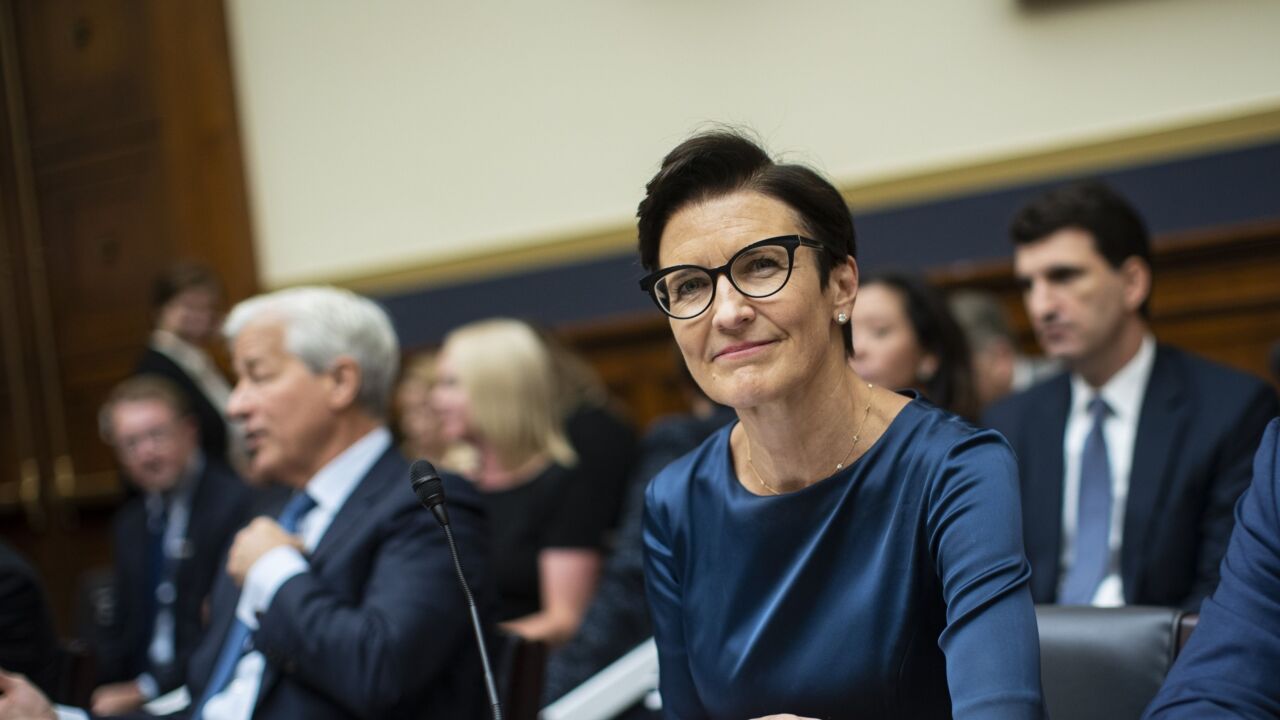Much was made Wednesday of JPMorgan Chase’s lackluster credit vibes — executives were
Yet behind the headline numbers were hints that a pickup in loan demand — at least on the consumer side — may be closer than it appears at the nation’s largest bank.
Debit and credit card spending rose handily year over year, while travel and entertainment spending rose 50% between February and March, the company said. Moreover, it released $5.2 billion in loan-loss reserves, nearly twice the amount it gave back in the fourth quarter.
“That’s positive because it confirms what we’re seeing in the industry,” according to Piper Sandler analyst Jeff Harte, who said the bellwether company’s reserve releases are happening faster than analysts expected. “It confirms the credit outlook is getting a lot better at JPMorgan.”

To be sure, the remaining $25.5 billion in loss reserves is about $7 billion more than what JPMorgan needs to keep on hand to handle base-case economic scenarios, Chief Financial Officer Jennifer Piepszak said during its quarterly earnings call.
“We’re prepared for more adverse outcomes given remaining uncertainties around the impact of new virus strains and the health of the underlying labor markets,” Piepszak said.
Loan demand — or lack thereof — remains hard to predict more than a year into the pandemic. At the start of 2021, bankers and analysts were hopeful of a rebound in the second half of the year.
Any progress was not immediately evident in the first three months of the year. JPMorgan’s outstanding loans declined 4% year over year. Home lending and credit card lending dropped 13% and 14% year over year, respectively, though auto lending rose 10%. The Paycheck Protection Program propped up loan growth in the consumer and small-business banking division, but that unit’s net revenue fell 10% to $5.6 billion.
“We’re now in mid-April and we’re still not seeing [total] loan growth materialize,” Harte said. “Every month that goes by without seeing it, it makes people more skeptical that it will pick up in the back half of the year.”
Still, there were those green shoots.
Debit and credit card spending climbed 9% year over year and 14% since the first quarter of 2019. Historically, when consumers start spending, their credit card balances go up, Harte said.
“We don’t know if it’s a function of the stimulus checks or something else … but historically when people spend more on their credit cards, they tend to start carrying more dent on those credit cards, so that’s when we would see a pickup in loan growth follow,” he said.
Asked by an analyst Wednesday about the timing of loan growth for both consumers and businesses, Piepszak said the consumer side should pick up in the second half of the year. But the commercial side is expected to remain muted.
“It really is all about demand,” she said.





